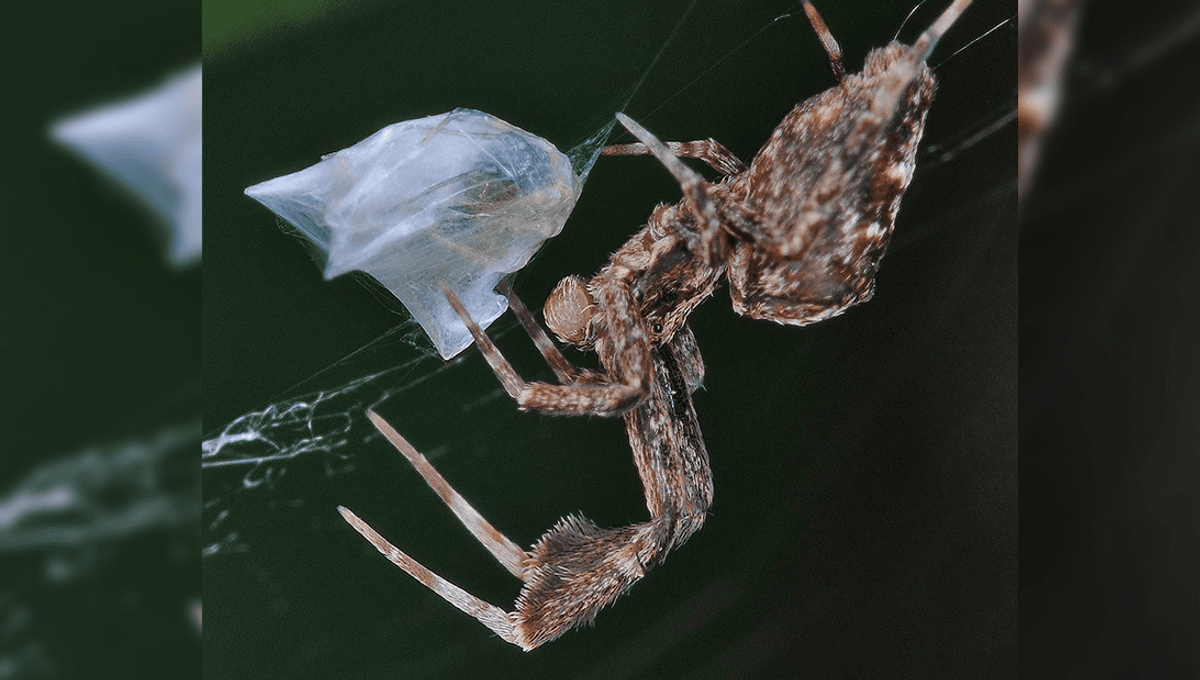
Venom can be as potent as it pleases, but if you’ve got no way of delivering it, you’re looking at wasted toxins. That got researchers wondering how the feather-legged lace weaver kills its prey, considering it apparently lost the equipment needed to inject over the course of its evolution. Now, a new preprint (that’s not yet undergone peer review) suggests they may do it by dribbling toxic goo all over their victims.
“Spiders are widely successful predators that rely on their foraging webs and potent venoms to capture and subdue prey,” write the preprint authors. “While many spider clades have lost their ability to use silk for hunting, virtually all spiders still depend on venom to subdue their prey – with one exception.”
That exception is spiders of the Uloboridae family who, according to a 1931 hand drawing, have muscle bundles where venom glands are typically found. Instead of using fangs to bite prey, these spiders have been observed wrapping it in copious amounts of silk before regurgitating digestive fluids onto their insect burrito. Silk alone isn’t necessarily enough to immobilize prey, so is there more to those fluids than meets the eye?
Using histology and multi-tissue transcriptomics, researchers working on the preprint investigated to what degree the feather-legged lace weaver, Uloborus plumipes, is missing its venom glands, and what venom toxins are detectable across different parts of its body.
“Our findings indicate that U. plumipes effectively does not possess venom glands, nor the duct opening in the fangs,” explain the authors. “However, we identified putative neurotoxins that are highly expressed in the digestive gland, suggesting that these may contribute to prey immobilization.”
Two of those toxins that were highly expressed included U3-aranetoxins and U24-ctenitoxins, alongside defensin, which isn’t thought to be a neurotoxin as it’s typically more involved in antimicrobial activity. It seems the Uloboridae spiders may have lost their venom apparatus, but they’re still packing toxins.
Toxins were found to be consistently present in the midgut, suggesting they perform a functional role here, though it could be tied to their physiology. Alternatively, as the researchers hypothesized, it could be an adapted hunting strategy, as prey that’s been silk-wrapped becomes fully immobilized once a cocktail of “digestive toxins” has been dribbled onto them by their captor. If so, it demonstrates a unique and alternative approach to hunting for an animal that’s lost its venom delivery system.
The study, which has not been subject to peer review, is currently available as a preprint on bioRxiv.
[H/T: LiveScience]
Source Link: Death By Goo? This Spider May Hunt By Dribbling Toxic Digestive Fluids